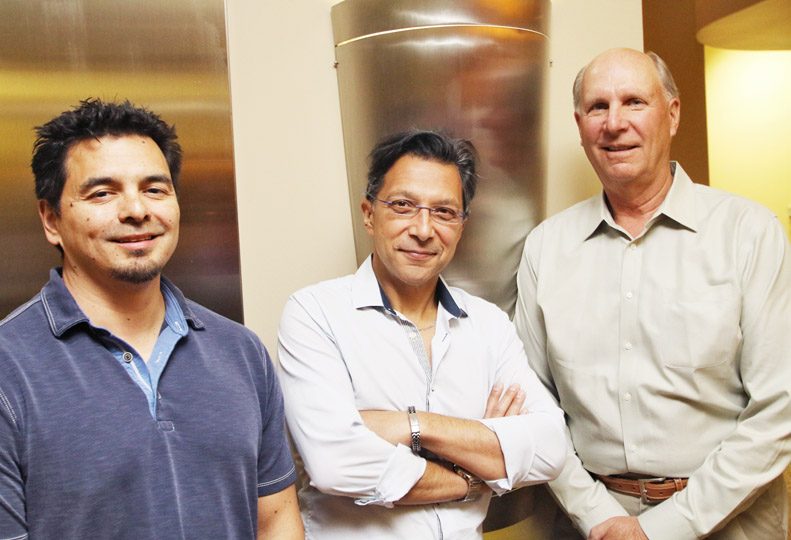
Home » Womer looks to broaden local, nontribal portfolio
Womer looks to broaden local, nontribal portfolio
Majority of firm's projects outside of Spokane area

May 25, 2017
Womer & Associates, the Spokane-based, Native American-owned architectural and engineering firm, says it’s on the verge of expanding and expects to soon be adding staff, but still is struggling to restore the balance of tribal and nontribal work it enjoyed before the recession.
The 25-year-old firm leases 9,000 square feet of office space on the sixth floor of Old City Hall, at 221 N. Wall, and currently has just shy of 30 total employees, says Nima Motahari, the firm’s marketing manager and a senior project manager.
The average tenure of the firm’s employees ranges from eight to 10 years, Motahari says.
Womer & Associates currently has two architects, an architectural designer, four civil engineers, two civil engineering designers, a landscape architect, a mechanical designer and engineer, and two fire protection engineers, Motahari says.
In 2013, Womer & Associates absorbed Creighton Engineering Inc., which specialized in fire-protection design services.
“Now we’re looking to expand in the structural engineering area,” Motahari says. The firm may also soon hire a junior-level architect, a drafting intern, and added support staff, he says.
Bob Smith, the firm’s vice president, declines to disclose its average annual amount of work.
“I think what we feel most comfortable saying is that in the last several years, we’ve had a total of $100 million in construction projects we’ve designed,” Smith says, adding that the firm has designed projects in most states in the western U.S. and Canada.
Smith says the firm, on average, has at least five designed projects under construction per year.
“We’ve been profitable in 21 of 24 years, never missed payroll or wrote a bad check,” Smith says. “We’ve never had a failed project and always meet budgets.”
William R. Womer and Bill Butts cofounded Womer & Associates in September 1992, says Smith, who was a consultant for the firm in its first year before joining it as a full-time employee the following year.
In 2005, Womer & Associates bought the assets of longtime Spokane structural engineering company Atwood-Hinzman Inc.
Today, the firm’s principals include Womer, a member of the Colville Tribe; Smith; and president Rick Mathews, who is a member of the Spokane Tribe.
Smith says Womer currently is halfway through a two-year sabbatical from the firm to dedicate time and service to his tribe.
“Willie’s goal was to provide fair, honest, and professional architectural engineering services to the Native community and at-large community,” Smith says.
Initially, the amount of work the firm performed on tribal reservations and in and around Spokane was equal. Now, nine out of 10 projects designed by Womer & Associates is being done in Native communities, Motahari says.
“Those numbers really began to change for us when the recession hit,” Motahari says. “The amount of projects here decreased, but the Native communities were still underserved, and that market really grew for us.”
Unfortunately, Motahari says, even though design work has returned to Spokane, Womer & Associates is continuing to strive to recapture projects in the Spokane market.
Motahari says the firm hopes to carry momentum it gained last year when two of its designs for projects in town were selected as award winners.
Womer & Associates drafted the new designs for the Native Project, located at 1803 W. Maxwell on the North Side, and the Ben Burr Building, at 5915 S. Regal on the South Hill. They were both winners in the 2016 Mayor’s Urban Design Awards. The Native Project earned the Mayor’s Choice Award, and the Ben Burr Building garnered the People’s Choice Award.
Also last year, the firm was recognized for an Excellence in Concrete Construction: Architectural Concrete runner-up award from the Washington Aggregates & Concrete Association for its work on a $17.8 million administration center for the Stillaguamish Tribe of Indians, in Arlington, Wash., just north of Seattle.
Womer provided all of the architectural and engineering services for the 57,000-square-foot, two-story structure, which firm members say includes many design features that hold geographical and historical significance for tribal members.
“We want to be the premier Native design firm on the West Coast,” Motahari says. “One of our missions is to produce something unique for each tribe.”
Motahari says Womer & Associates has always taken pride in its ethnically diverse staff, which isn’t made up of just tribal members.
Mathews, whose been employed at Womer & Associates for 15 years, says growing up on the Spokane reservation has helped give him a perspective as an architect when it comes to designing buildings for his and other tribes.
“You think a lot about what’s a culturally appropriate design; you have to have been there to have a context,” Mathews says. “I think that gives us an edge in our design. In Indian Country, art is admired, and it’s something that’s hard to teach.”
Latest News Up Close Real Estate & Construction
Related Articles
Related Products

![Brad head shot[1] web](https://www.spokanejournal.com/ext/resources/2025/03/10/thumb/Brad-Head-Shot[1]_web.jpg?1741642753)


